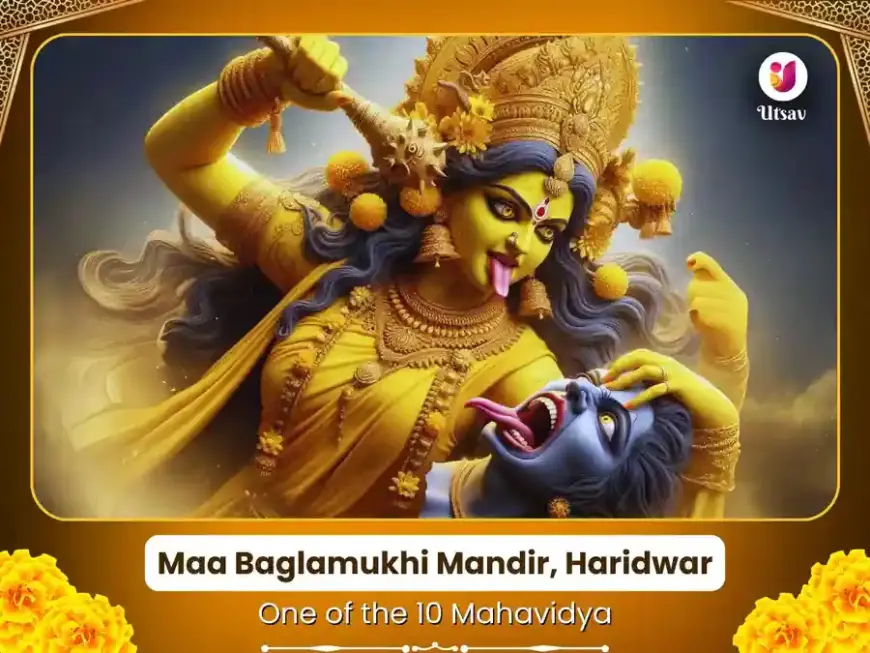India's 10 Most Sacred Lord Vishnu’s Temples & Their Spiritual Legacy
Discover the 10 most sacred temples of Lord Vishnu in India and explore their deep-rooted spiritual legacy. From ancient rituals to divine architecture, embark on a journey through the heart of Vishnu worship across the country.

A Pilgrimage Through Time: The Spiritual Significance of Vishnu Temples
Lord Vishnu, the Supreme Preserver in Hinduism, is worshipped across India in countless temples, each with unique legends, architectural marvels, and spiritual significance. These temples are not just places of worship but living energy centers where devotees experience divine blessings, miracles, and deep spiritual transformations
From the snow-capped Himalayas to the southern shores of Tamil Nadu, Vishnu manifests in various forms—Venkateswara, Badrinarayan, Ranganatha, Jagannath, and more—each representing a different aspect of his cosmic duty to protect Dharma.
In the cosmic dance of creation, preservation, and dissolution, Lord Vishnu stands as the eternal preserver - the divine force that maintains cosmic order. Across India's sacred geography, magnificent temples have risen over millennia, each telling a story of divine intervention, royal devotion, and miraculous occurrences. These aren't mere structures of stone; they are living embodiments of Vishnu's various avatars, where the boundary between the mortal and divine dissolves.
For countless generations, these temples have served as spiritual powerhouses where:
-
Kings sought blessings before great battles
-
Saints achieved enlightenment
-
Common devotees found solutions to impossible problems
-
Ancient rituals continue unbroken for centuries
For the modern seeker, these temples remain accessible - whether through physical pilgrimage or through the sacred practice of puja online, allowing devotees worldwide to connect with these divine energies
This guide explores the top 10 most famous Vishnu temples in India, their spiritual significance, and why millions of devotees visit them every year.
1. Tirumala Venkateswara Temple, Andhra Pradesh
As the most visited of all Lord Vishnu temples in India, Tirupati's spiritual energy is palpable.
- Primary Deity: Lord Venkateswara (Balaji)
- Significance:
-
Known as the "Kali Yuga Vaikuntha"—Vishnu’s abode in this age.
-
The temple receives 50,000–100,000 devotees daily, making it the most visited holy site in the world.
-
Legend says Lord Vishnu resides here to bless devotees who cannot reach Vaikuntha (his heavenly abode).
- Unique Feature: -
The deity’s hair remains mysteriously damp, believed to be from the divine Akasa Ganga (celestial Ganga).
- Best Time to Visit: During Brahmotsavam (September/October), a grand 9-day festival.
The Legend Behind the Temple
According to ancient texts, this is the spot where Lord Vishnu chose to stay on Earth, unable to resist the devotion of a humble cowherd. The temple's origin story connects to:
-
The curse of sage Brighu who kicked Vishnu
-
Vishnu's incarnation as Venkateswara to repay karmic debts
-
The wedding of Venkateswara and Padmavati financed by Kubera's loan (still being repaid through temple donations!)
Why Your Visit Matters
-
The hair offering ritual symbolizes surrendering ego
-
The famous Laddu prasadam carries blessings of prosperity
-
The Hundi offerings continue an ancient tradition of community sharing
2. Badrinath Temple, Uttarakhand
This sacred site, one of the four Char Dham Lord Vishnu temples in India, remains accessible only six months a year due to extreme Himalayan weather.
- Primary Deity: Badrinarayan (Vishnu in deep meditation)
- Significance:
-
One of the Char Dham (four sacred pilgrimage sites).
-
Mentioned in the Vedas and Puranas as a place where Vishnu meditated for humanity’s welfare.
- Unique Feature: -
The temple opens only 6 months a year (April–November) due to extreme Himalayan winters.
-
The Tapt Kund hot springs nearby are believed to cleanse sins before darshan.
- Sacred Ritual: Maha Abhishekam with ghee and milk from local Himalayan cows.
The Sacred Backstory
Nestled in the Himalayas, this temple marks where:
-
Vishnu meditated under the Badri (berry) tree
-
The Pandavas took their final journey to heaven
-
Adi Shankara rediscovered the deity buried under snow
The Miracle of the Closing Ceremony
Every winter when the temple closes:
-
The priest carries the deity 11 km downhill to Joshimath
-
The Akhand Jyoti lamp keeps burning for six months
-
The reopening date is revealed through divine signs
3. Sri Ranganathaswamy Temple, Tamil Nadu
- Primary Deity: Lord Ranganatha (Vishnu in reclining form on Adishesha)
- Significance:
-
The largest functioning Hindu temple in the world (156 acres).
-
One of the 108 Divya Desams (sacred Vishnu temples glorified in Tamil hymns).
- Unique Feature: -
The 7-tiered Rajagopuram (gateway tower) stands at 236 feet, one of Asia’s tallest.
-
The deity is believed to be Swayambhu (self-manifested).
- Best Time to Visit: Vaikunta Ekadasi (Dec–Jan), when the celestial gates of heaven open.
Architectural Marvel
This temple complex spans 156 acres with:
-
Seven concentric walls representing seven spiritual planes
-
The reclining Vishnu statue showing the entire creation emerging from his navel
-
21 magnificent gopurams (towers) adorned with thousands of sculptures
The Floating Deity Legend
The main deity:
-
Was gifted by Lord Rama to Vibhishana
-
Refused to go further than Srirangam, saying "This is my chosen place"
-
Is believed to actually float above the sanctum
4. Jagannath Temple, Puri, Odisha
- Primary Deity: Lord Jagannath (a form of Krishna) with siblings Balabhadra & Subhadra
- Significance:
-
Part of the Char Dham & one of the four Dhāms established by Adi Shankaracharya.
-
Famous for the Rath Yatra, where deities ride colossal chariots pulled by millions.
- Unique Feature: -
The flag atop the temple always flaps opposite to the wind’s direction—a scientific mystery.
-
The Mahaprasad (offering) is cooked in earthen pots using firewood in a unique ritual.
The Mysterious Deities
Unlike any other temple:
-
The wooden deities are replaced every 12-19 years (Nabakalebara)
-
The new logs must self-identify through mystical signs
-
The carving happens in complete secrecy
The Rath Yatra Miracle
During the annual chariot festival:
-
The direction the chariots move predicts future events
-
The Nila Chakra atop the temple is visible from everywhere in Puri
-
The Mahaprasad's quantity automatically adjusts to feed all devotees
5. Dwarkadhish Temple, Gujarat
Archaeological evidence confirms this as one of the most ancient Lord Vishnu temples in India.
- Primary Deity: Dwarkadhish (Krishna as King of Dwarka)
- Significance:
-
One of the Char Dham & Sapta Puri (seven sacred cities).
-
Believed to be Krishna’s ancient kingdom submerged in the sea.
- Unique Feature: -
The temple’s flag changes five times a day, symbolizing Krishna’s presence.
-
The Sudama Setu, a bridge leading to the temple, is linked to Krishna’s friend Sudama.
The Sunken Kingdom
Archaeological evidence shows:
-
The original Dwarka sank under the sea (as mentioned in Mahabharata)
-
Marine excavations found ancient structures matching descriptions
-
The current temple stands where Krishna's palace once was
The Mysterious Flag
Every day:
-
The temple flag is changed against natural wind direction
-
The same priest family has done this for 42 generations
-
It symbolizes Krishna's mastery over nature
6. Guruvayur Temple, Kerala
Known as "Bhooloka Vaikuntha," this temple's strict traditions make it unique among Kerala's Lord Vishnu temples in India. The temple elephants are as much an attraction as the beautiful deity.
- Primary Deity: Guruvayurappan (Baby Krishna)
- Significance:
-
Called "Bhooloka Vaikuntha" (Heaven on Earth).
-
Famous for childless couples seeking blessings.
- Unique Feature: -
Only Hindus allowed inside the sanctum.
-
The elephant sanctuary nearby hosts temple elephants.
7. Padmanabhaswamy Temple, Kerala
- Primary Deity: Lord Padmanabha (Vishnu reclining on Ananta)
- Significance:
-
One of the 108 Divya Desams.
-
The secret vaults (Kallara) hold unimaginable treasures.
- Unique Feature: -
The deity is seen through three doors—face, navel, and feet.
-
The royal family of Travancore serves as temple custodians.
The Secret Vaults
Beyond the famous Vault B (still unopened):
-
The temple has six other vaults with unimaginable wealth
-
The treasures include:
-
Solid gold statues taller than humans
-
Bags of diamonds and emeralds
-
Ancient jewelry dating back millennia
The Unique Deity Position
Lord Vishnu reclines on Ananta Sesha in a rare posture:
-
His right hand rests over a Shiva lingam
-
Showing the unity between Vishnu and Shiva
-
The deity is visible through three doors (representing three states of consciousness)
8. Shree Vitthal Temple, Pandharpur
- Primary Deity: Vitthal (Krishna as a standing cowherd)
- Significance:
-
The heart of Maharashtra’s Bhakti movement.
-
Saint Tukaram & Dnyaneshwar composed devotional songs here.
- Unique Feature: -
Devotees take Palkhi processions covering 200+ km on foot.
9. Salasar Balaji Temple, Rajasthan
- Primary Deity: Hanuman (Vishnu’s avatar)
- Significance:
-
A rare temple where Hanuman is worshipped like Vishnu.
-
Known for fulfilling impossible wishes.
- Unique Feature: -
The deity’s eyes appear to follow devotees.
10. Udupi Sri Krishna Temple, Karnataka
- Primary Deity: Bala Krishna (infant Krishna)
- Significance:
-
Established by Madhvacharya (Dvaita philosopher).
-
The deity was found in a ball of clay.
- Unique Feature: -
Darshan is through a window with nine holes.
Spiritual Significance of Visiting These Temples
-
Removes past-life karma (Badrinath, Rameswaram).
-
Grants wealth & prosperity (Tirumala, Padmanabhaswamy).
-
Fulfills desires (Salasar Balaji, Guruvayur).
-
Offers liberation (Moksha) (Dwarka, Puri).
FAQs
Q: Which is the richest Vishnu temple?
A: Padmanabhaswamy Temple (hidden vaults worth billions).
Q: Which temple never closes?
A: Tirumala Venkateswara Temple (open 365 days).
Q: Where is Vishnu in meditation form?
A: Badrinath Temple (Himalayas).
Q: Can non-Hindus enter these temples?
A: Most allow, but Guruvayur & some others restrict inner sanctum access.
Why These Temples Matter Today
These temples continue to be:
-
Living museums of ancient rituals
-
Power centers of spiritual energy
-
Testaments to India's unbroken devotional traditions
Whether you visit physically or participate in puja online, the blessings remain equally potent. As the ancient saying goes:
"The gods reside where they are worshipped with devotion."
Book a Vishnu Puja Online
Can’t visit? Many temples offer virtual darshan & online pujas.
? Book Vishnu Puja Online
Visit utsavapp.in/puja
Whether you visit physically or book a puja online, these Lord Vishnu temples in India offer divine connection. Many now provide:
Live-streamed rituals
Virtual darshan bookings
Online abhishekam services
Prasad delivery worldwide
As the Vedas proclaim: "The gods descend where devotees invoke them with love." Whether you visit physically or book a puja online, these Lord Vishnu temples in India remain accessible to all sincere seekers.
Keywords:
Lord Vishnu temples in India, top Vaishnavite temples, spiritual significance of Vishnu temples, online puja booking for Vishnu, best temples for Vishnu worship.
What's Your Reaction?
 Like
0
Like
0
 Dislike
0
Dislike
0
 Love
0
Love
0
 Funny
0
Funny
0
 Angry
0
Angry
0
 Sad
0
Sad
0
 Wow
0
Wow
0

















































